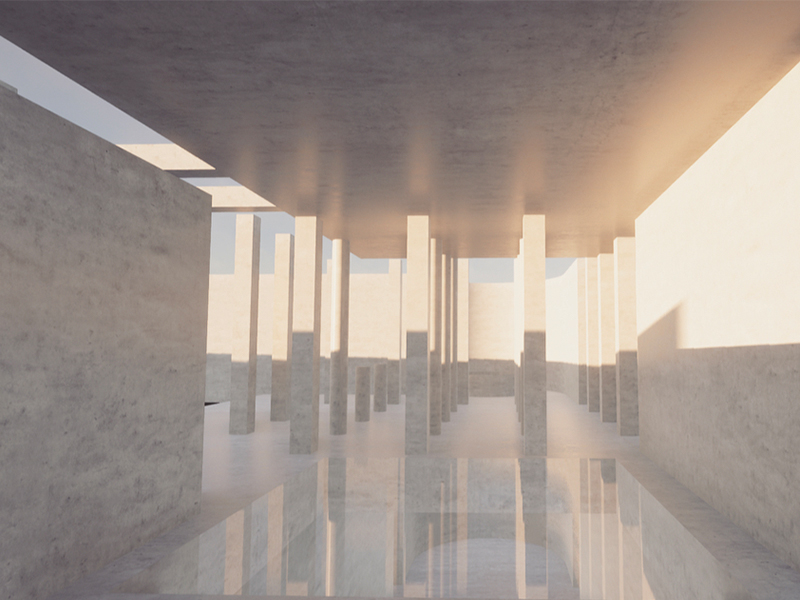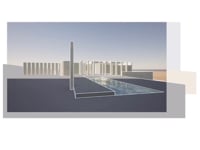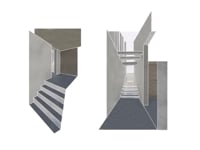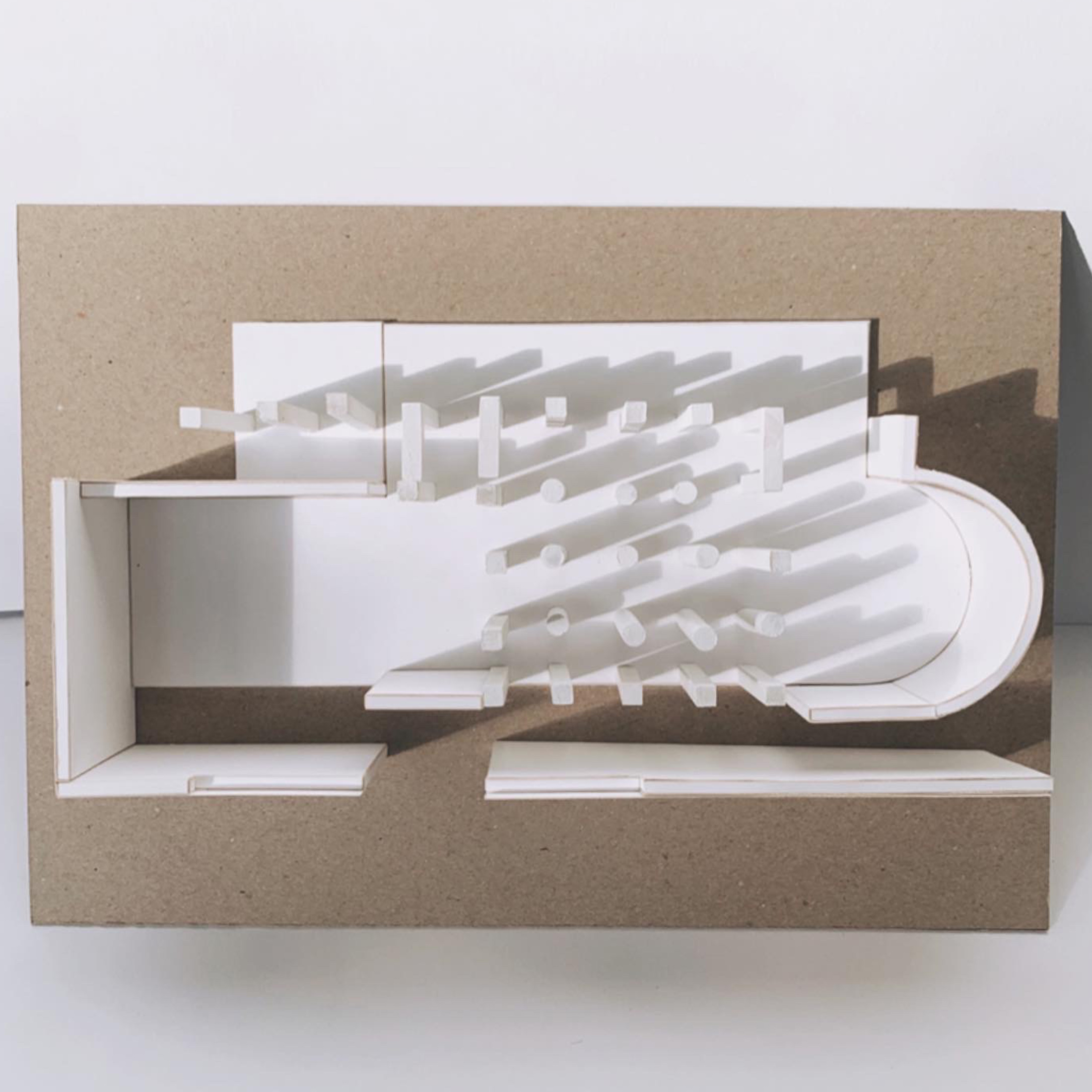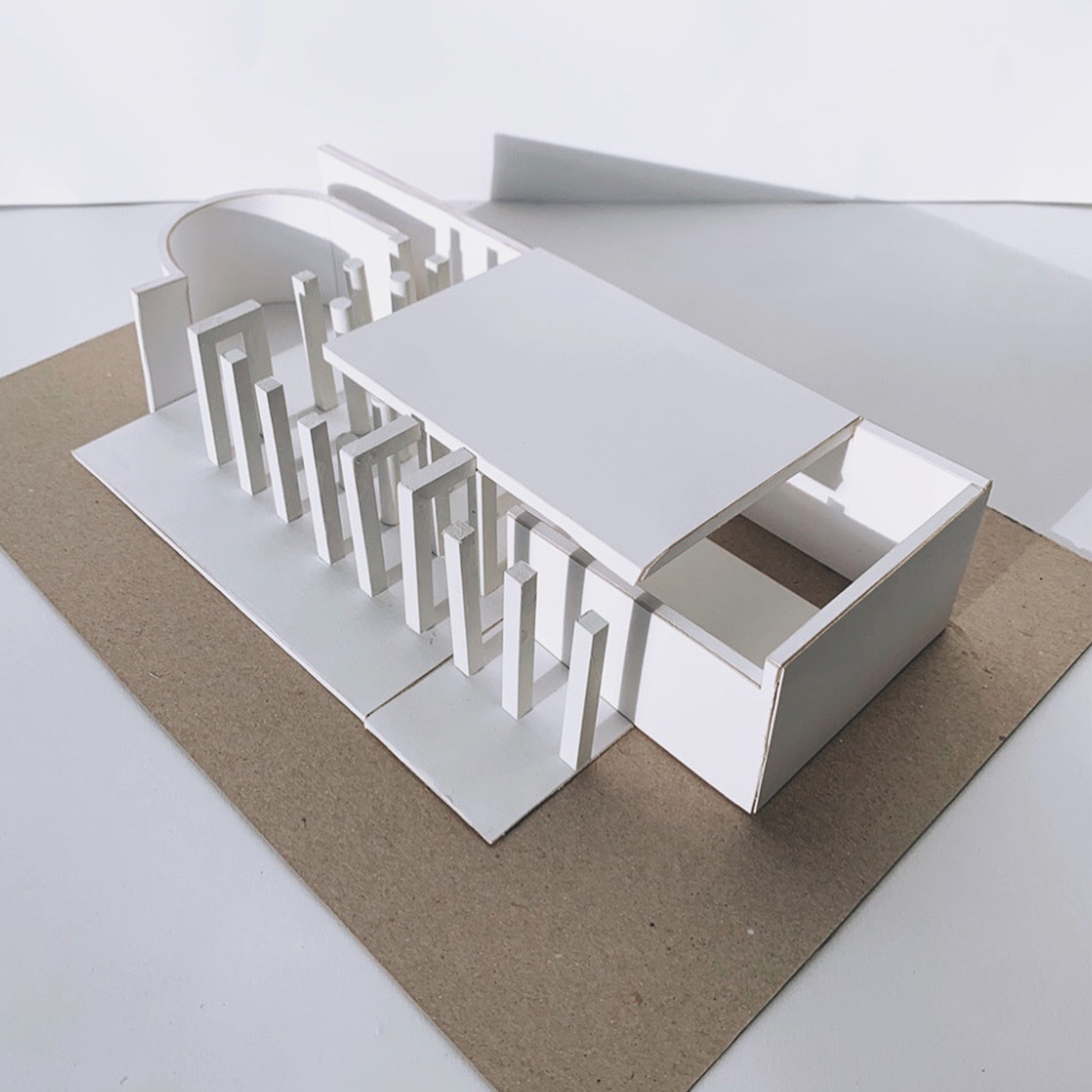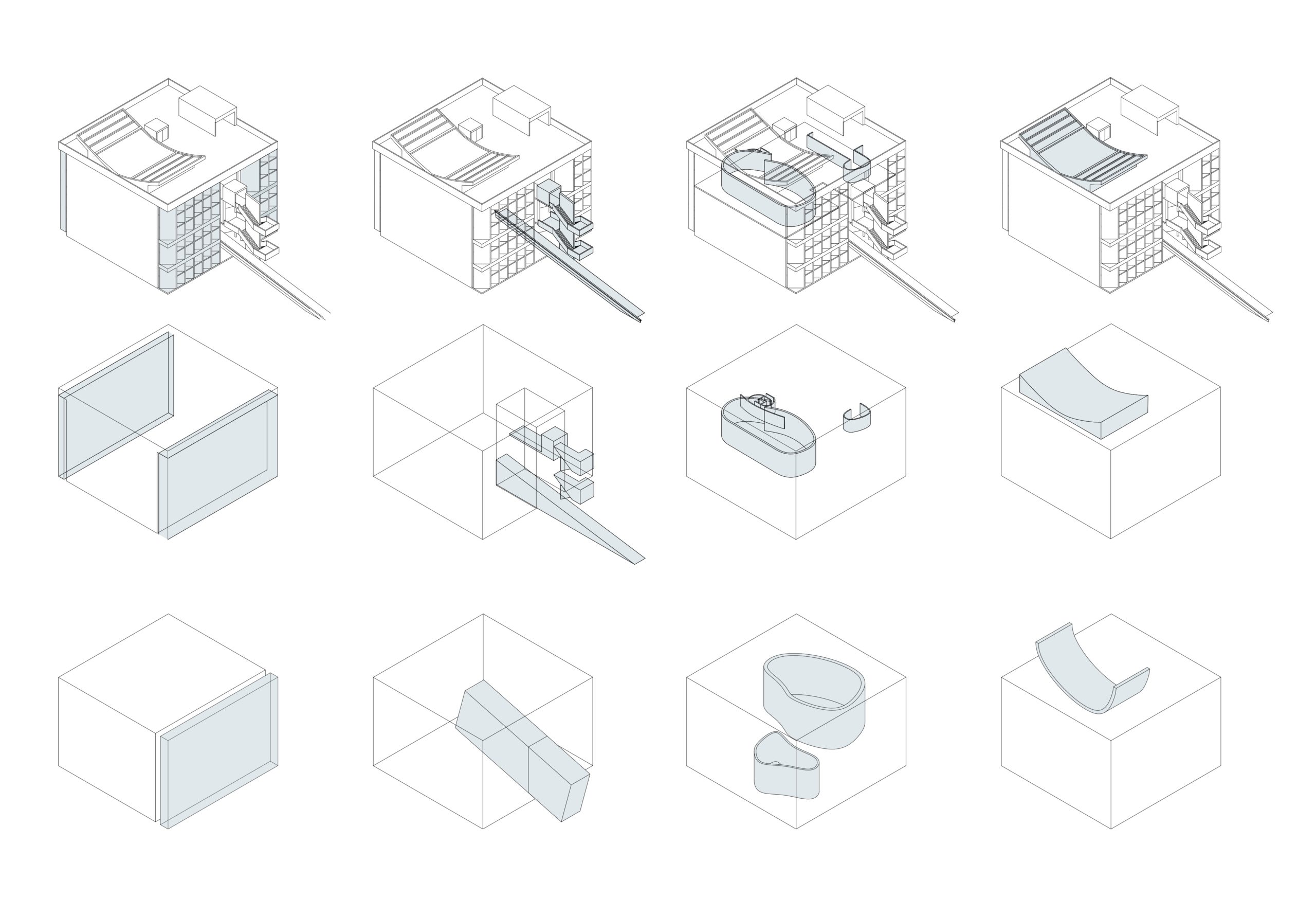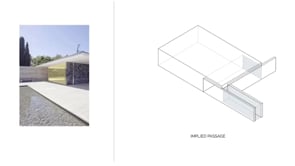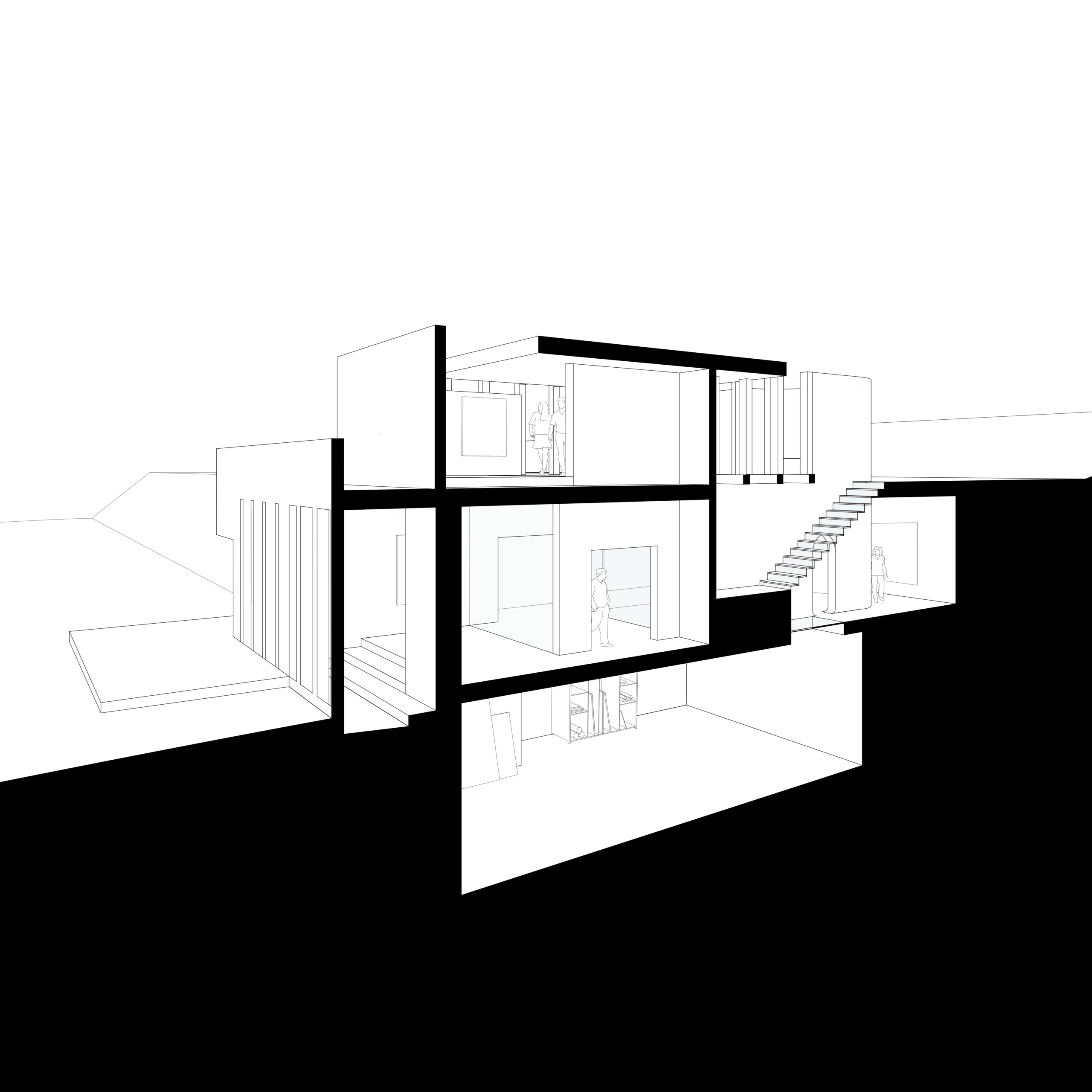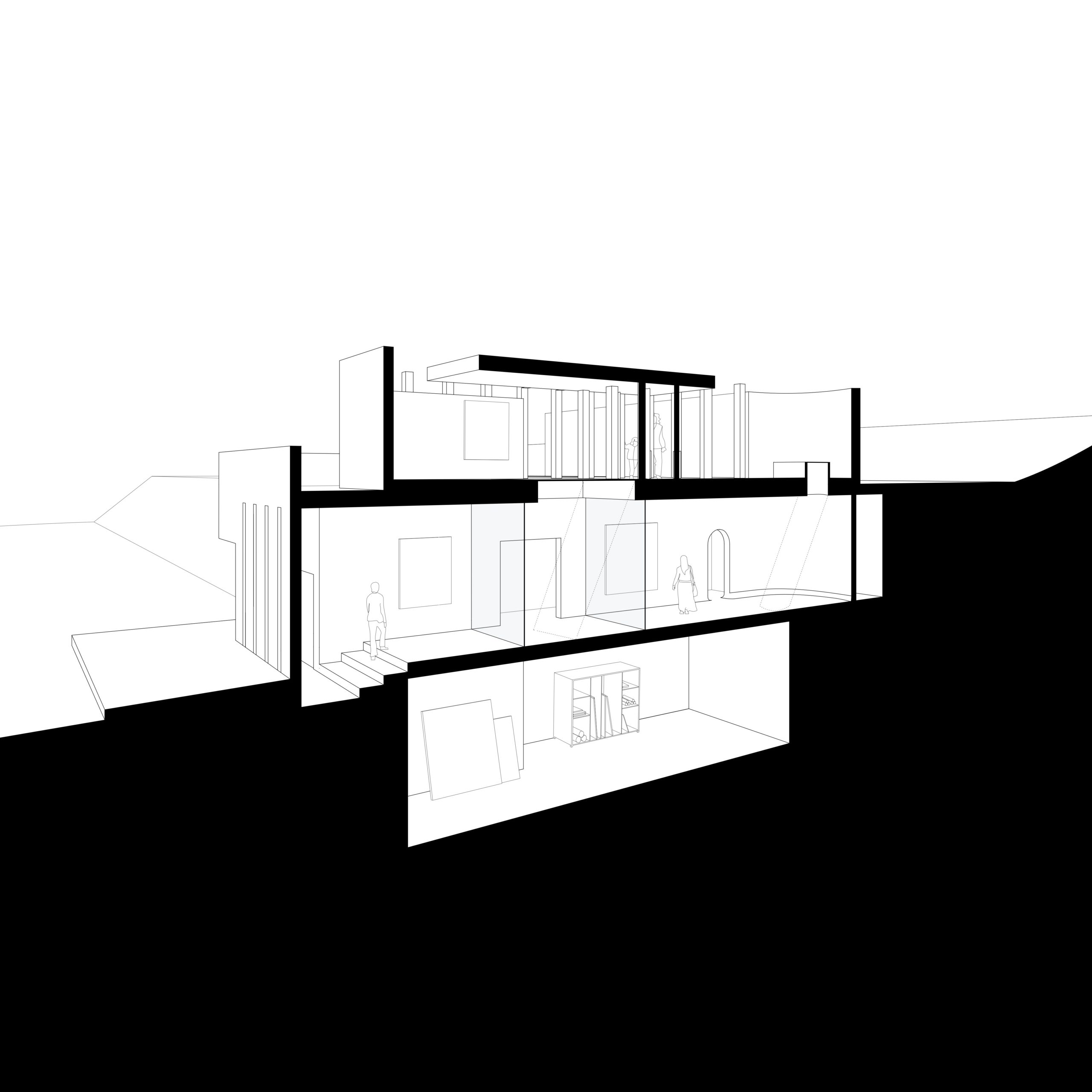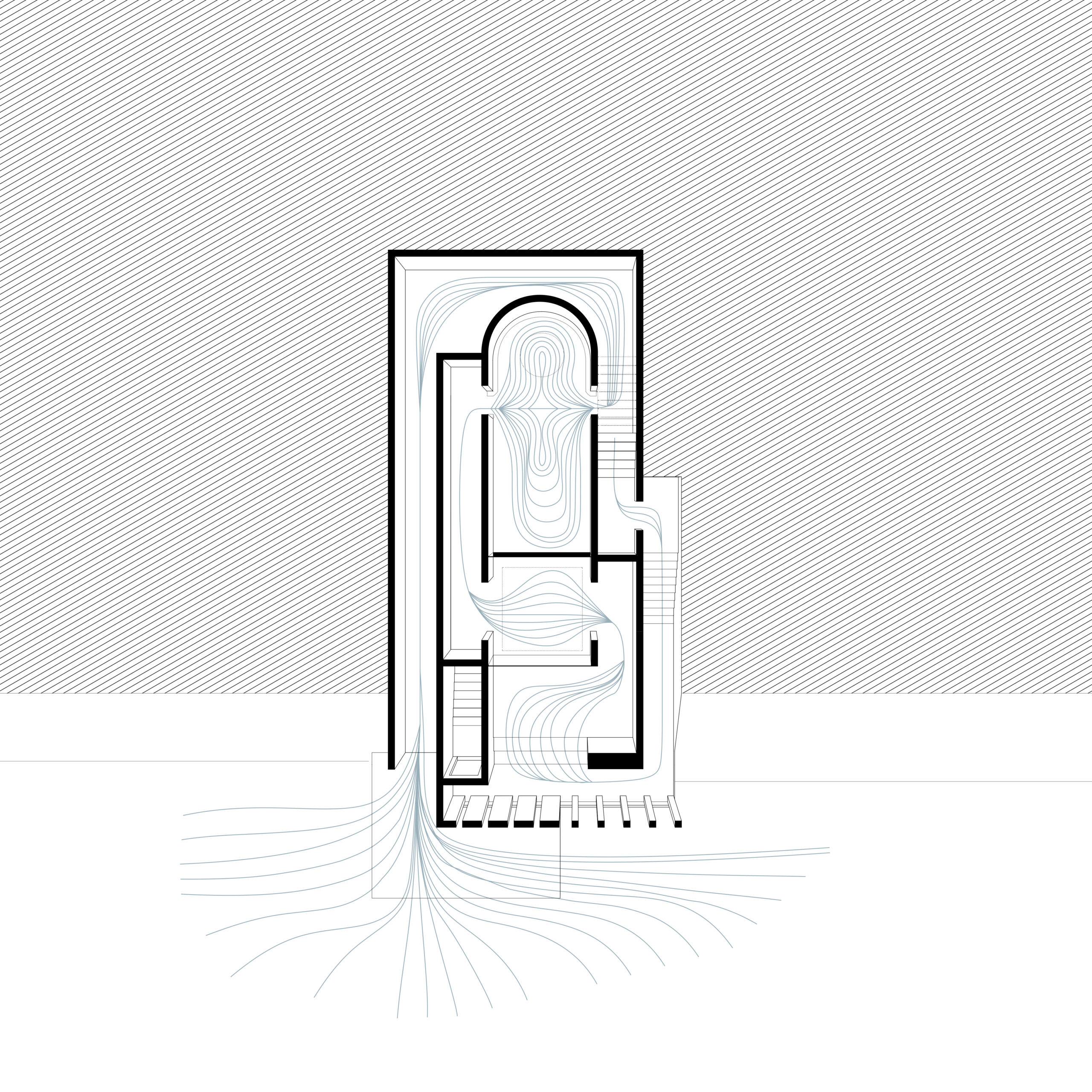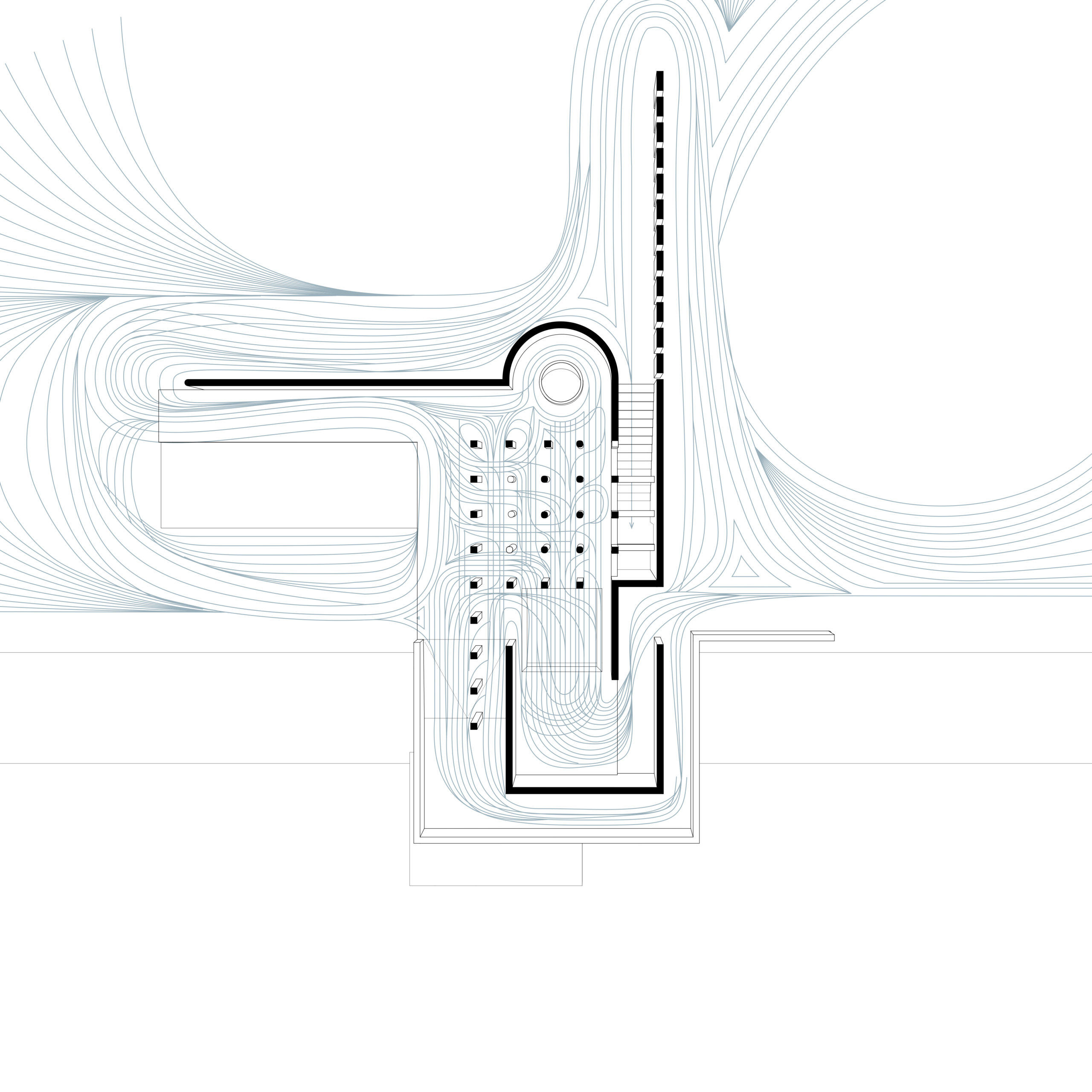Boundless Architecture: Studies of Thresholds and Willfull Shape
Architectural Thresholds can be described as recognizable definers of transition and movement in architecture. Precedent studies indicate that thresholds play to our memory and understanding of architecture. Passages, portals, filter-systems and fields of objects are recognizable forms of traditional thresholds that act as boundaries and serve as transition points in architecture.
Blurring these recognizable elements together, and willfully altering their shape can have a substantial effect on the perception of an architectural environment. When traditional markers of threshold are blurred, architecture becomes more susceptible to a boundless user experience. Within a boundary-less form, the importance of willful shape becomes increasingly imperative as the primary identifier for human understanding of architectural thresholds. The combination of blurred threshold elements and willfully altered shapes creates an architecture reflective of our time: boundless in possibilities, individualized, and innately understood.
